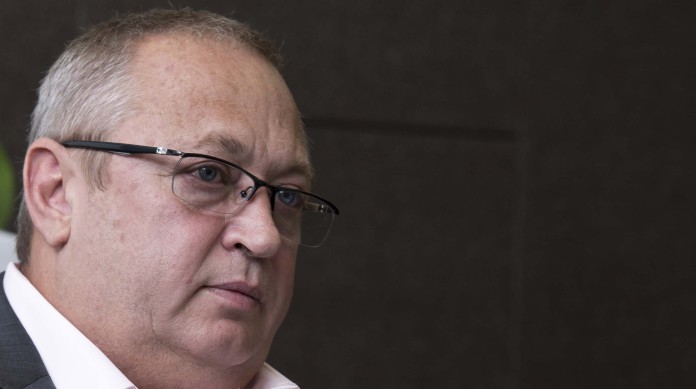
KEEP an eye on Neal Froneman, CEO of Sibanye-Stillwater, because despite a pledge to reinstate the dividend during the firm’s current financial year, he also believes the firm has the kind of access to capital markets to bring about a new chapter of merger and acquisition growth.
Asked how he intends to achieve the balance, Froneman told Miningmx in February: “We’ve never had the ability to access the debt markets like we do today. We’ve got a credit rating we’ve never had before and better access to the bond markets”.
What’s uppermost in his mind is adding battery or ‘high tech metals’ to the gold and platinum group metal (PGM) portfolio that’s currently generating cash flow hand over fist. According to a recent report by Goldman Sachs, cash flow on spot prices for the firm’s metals will see Sibanye-Stillwater net cash by year-end. Gross debt was $1bn as of December 31, a reduction from $1.8bn in gross debt a year earlier.
This cash flow is being powered largely by PGM price improvements which have continued this year after setting record levels in 2019. Astonishingly, though, Froneman speaks of the need to “become relevant” to the market in general, as if the firm’s exposure to PGMs wasn’t doing this already.
“The next step is to double the size of the company by market cap or we’re not relevant. We want to add the coppers of this world; the nickels, the lithiums and the graphites.
“We don’t want to become a Rio Tinto. We can’t compete with them in bulk commodities or the range and scale of production it has, but our model is based on precious metals and what’s complimentary in the high-tech metal space which feeds into the global carpool.”
Froneman has also zeroed in on silver. He cites a letter, written to him by “a high-ranking investor” who congratulated Sibanye-Stillwater on its transition into PGMs, but who also said silver was lacking from the portfolio. “We take that seriously,” Froneman told analysts and media at the firm’s financial results.
Asked later about his comments, he told Miningmx: “It’s a precious metal we don’t have and we think it’s very complementary.”
Merger and acquisition activity apart, analysts at Goldman Sachs think Sibanye-Stillwater continues to be undervalued on its current metrics, notwithstanding the fact its share price has scaled new all-time highs this year.
Said the bank: “Relative to its PGM peers, Sibanye is undervalued. The company trades on a 12-month forward EV:EBITDA [enterprise value to pretax earnings) multiple of 3x on consensus versus SA PGM peers at an average of 6.8x. We believe this discount is unwarranted even taking account the gold operations”.
The key to Sibanye-Stillwater’s immediate outlook, however, is firmly hitched to the palladium and rhodium. Palladium is 150% higher in the last three years whilst rhodium is at $12,000 per ounce at the time of writing versus $700/oz in 2016. The price improvements are powered by carmakers who use the metals in autocatalysis, required in order to minimise noxious car emissions.
Emissions standards are ever-increasing, but a shake up in South Africa’s PGM sector over the last decade has meant production can’t keep up. Platinum can be substituted for either of palladium and rhodium but it requires a technological cost (and time) that Goldman Sachs thinks carmakers are reticent to take on at the moment.
Froneman disagrees: “I’m going to be controversial here but I think substitution is closer than we think. Platinum is turning now. We went through $1,000/oz and we have seen the market tightening.”
It’s a moot point. “Substitution of palladium with platinum in gasoline vehicles is becoming increasingly likely and we do see platinum prices improving, but we don’t think substitution is quite there yet,” said Chris Griffith, CEO of Anglo American Platinum in an interview with Miningmx. “We think automakers might take another 18 months to a year before moving on that.”









